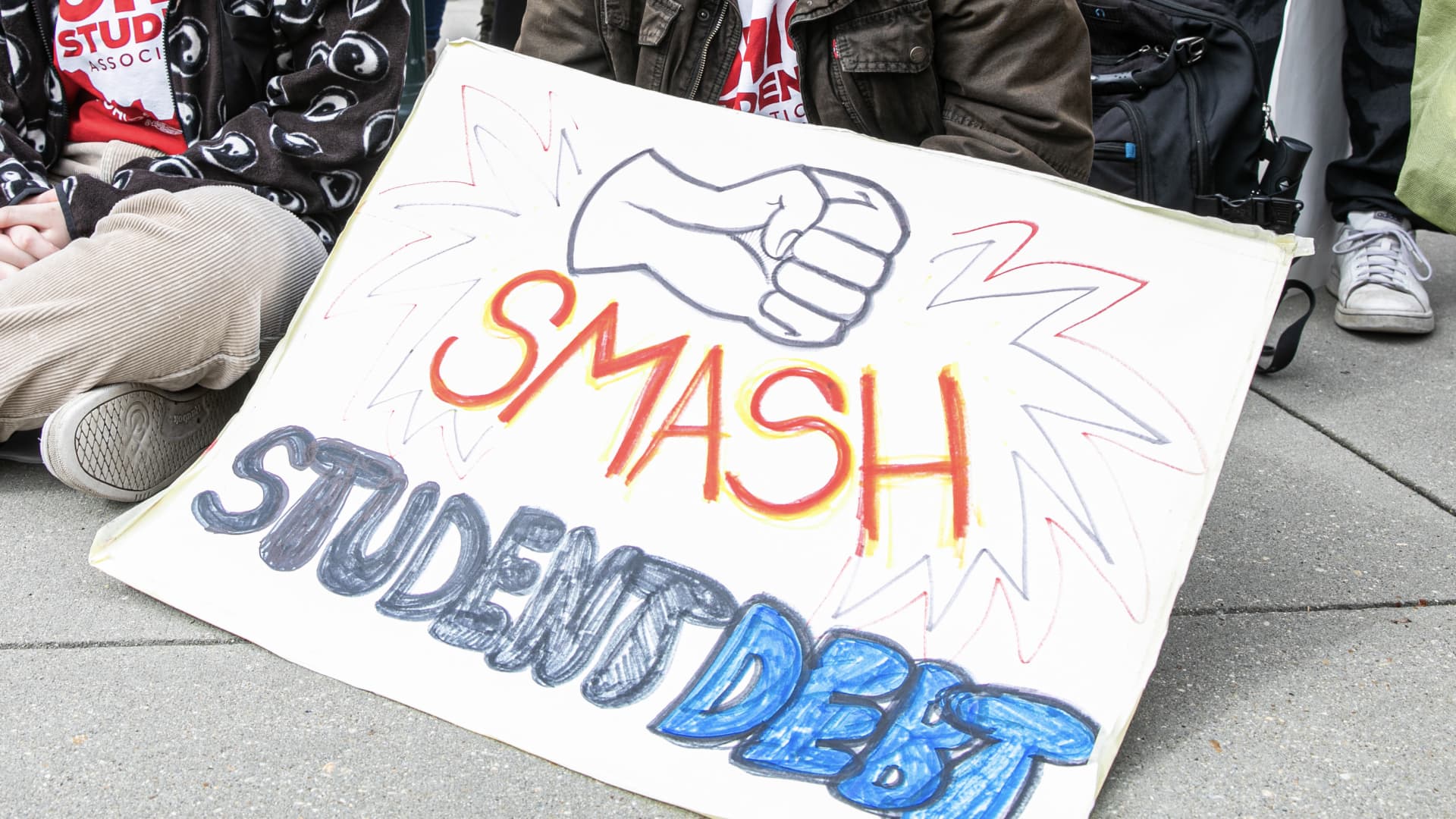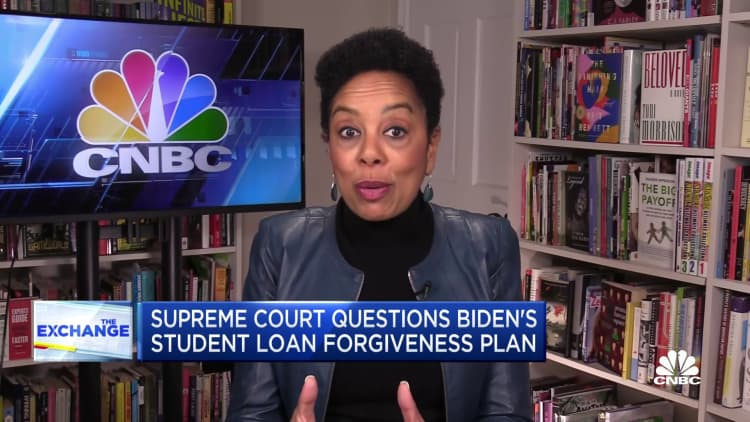What to do if Supreme Court strikes down Biden’s student loan forgiveness plan

Demonstrators in favor of canceling student debt gather outside the U.S. Supreme Court in Washington, D.C., on Feb. 28, 2023.
Bloomberg | Bloomberg | Getty Images
Keep your payments on hold
The Covid pandemic-era policy suspending federal student loan payments and the accrual of interest is still active.
The U.S. Department of Education has said borrowers won’t need to start making payments on their debt again until 60 days after the litigation around its forgiveness plan resolves. If the lawsuits are still unresolved at the end of June, the bills will resume 60 days after that, at the end of August.

If you’re unemployed or dealing with another financial hardship at that time, you can put in a request for an economic hardship or unemployment deferment. Those are the ideal ways to postpone your federal student loan payments, because interest doesn’t accrue.
If you don’t qualify for either, though, you can use a forbearance to continue suspending your bills. Just keep in mind that with forbearance, interest will rack up and your balance will be larger — possibly much larger — when you resume paying.
Compare alternate repayment plans
If you find your student loan payments too high when the bills resume, you should explore the different income-driven repayment plans available. These programs aim to make borrowers’ payments more affordable by capping their monthly payments at a percentage of their discretionary income and forgiving any of their remaining debt after 20 or 25 years.
Currently, the Biden administration is working to roll out a new repayment option under which borrowers would pay just 5% of their discretionary income toward their undergraduate student loans. The savings would be huge.
According to an example provided by higher education expert Mark Kantrowitz, a borrower who made $40,000 a year would currently have a monthly student loan payment of around $151 under the existing Revised Pay As You Earn Repayment, or REPAYE, plan. But with the new option, that monthly bill would plummet to $30.
I have significant concerns that there will be some big servicing delays.
Betsy Mayotte
president of The Institute of Student Loan Advisors
To determine how much your monthly bill would be under different plans, use one of the calculators at Studentaid.gov or Freestudentloanadvice.org, said Betsy Mayotte, president of The Institute of Student Loan Advisors, a nonprofit.
If you do decide to change your repayment plan, Mayotte recommends submitting that application to your servicer well ahead of the timeline for payments to restart. Lenders will likely be overwhelmed when they have to begin collecting loan payments from tens of millions of people again, Mayotte said.
“I have significant concerns that there will be some big servicing delays,” she said.
Explore other forgiveness options
The Biden administration has recently made a number of improvements to the Public Service Loan Forgiveness program, which allows those who work for the government and certain nonprofits to get their debt cleared after a decade of payments.
There are typically three primary requirements for public service loan forgiveness, although the recent changes provide some more wiggle room in certain cases:
- Your employer must be a government organization at any level, a 501(c)(3) not-for-profit organization or some other type of not-for-profit organization that provides public service.
- Your loans must be federal Direct loans.
- To reach forgiveness, you need to have made 120 qualifying, on-time payments in an income-driven repayment plan or the standard repayment plan.
The best way to find out if your job qualifies as public service is to fill out the so-called employer certification form. In 2013, the Consumer Financial Protection Bureau estimated that 1 in 4 American workers could be eligible for the program.
Jayk7 | Moment | Getty Images
What’s more, there are dozens of other forgiveness programs across the country that many borrowers are in the dark about, Kantrowitz said.
“There is no global database of all student loan forgiveness options,” he said.
For example, full-time teachers who work for five consecutive years in a low-income school may be eligible for up to $17,500 in loan forgiveness under the Teacher Loan Forgiveness Program.
The Nurse Corps Loan Repayment Program, meanwhile, allows certain nurses to get up to 85% of their student debt canceled.
File for bankruptcy
Among other reforms to the federal student loan system under Biden are new guidelines that will make it easier for those severely burdened by their student debt to discharge it in bankruptcy.
Currently, it’s difficult, if not impossible, for someone to walk away from their federal student debt in a normal bankruptcy proceeding.
“The new rules do give some hope to federal loan borrowers who may be struggling with their loans for 10 years or more,” Mayotte said.
The federal government will be less likely to object to borrowers’ attempts at discharging their debt, Mayotte said, if they have a record of making an effort to repay their student loans but don’t have a high enough income to cover the bill while also meeting their basic needs.
Share this news on your Fb,Twitter and Whatsapp
Times News Network:Latest News Headlines
Times News Network||Health||